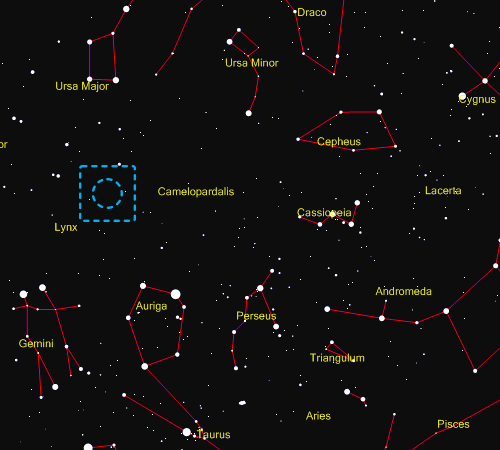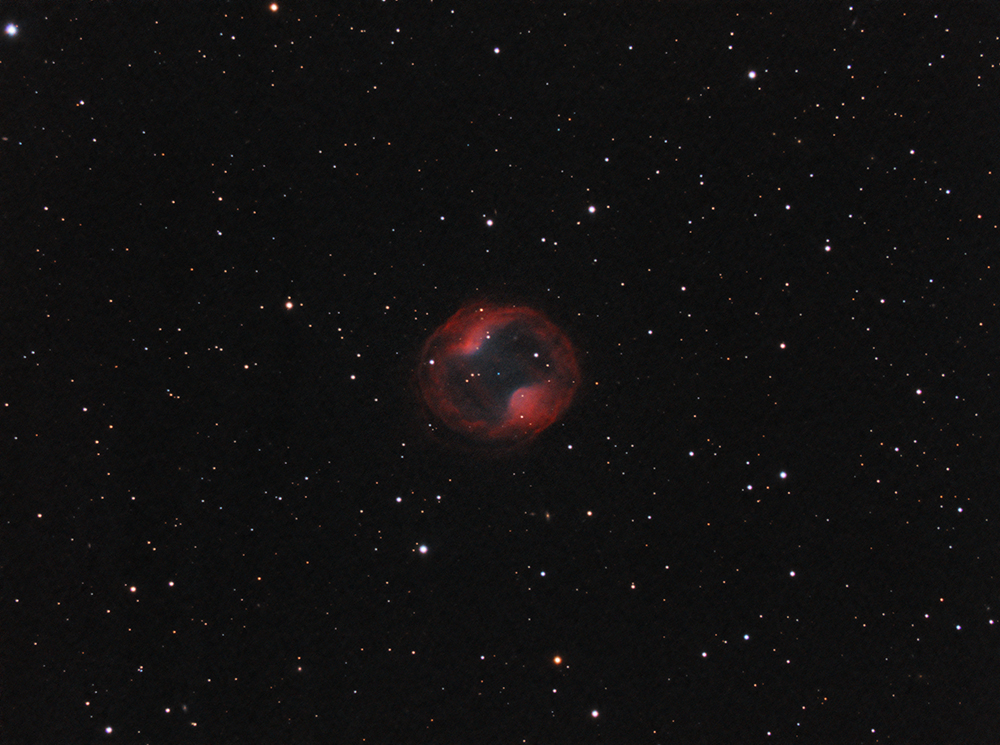NAME:
CATALOGUE:
OBJECT TYPE:
CONSTELLATION:
DISTANCE:
APPARENT MAGNITUDE:
APPARENT SIZE:
DIAMETER:
DISCOVERY:
BEST VIEWED IN:
RIGHT ASCENSION:
DECLINATION:
TELESCOPE:
DATA GATHERED:
EXPOSURES:
TOTAL TIME: |
|
The Headphones Nebula
Jones-Emberson 1, PK 164+31.1
Planetary Nebula
Lynx
1,600 light years
+14
7 arcminutes
3 light years
1939, R Jones & R Emberson
January
07h 59m 19s
+53º 22’ 09”
Celestron EdgeHD 8" with 0.7x Reducer
7 nights in January & February 2019
RGB = 24 x 300s each
Hα = 18 x 1800s
OIII = 20 x 1800s
25 hours |


